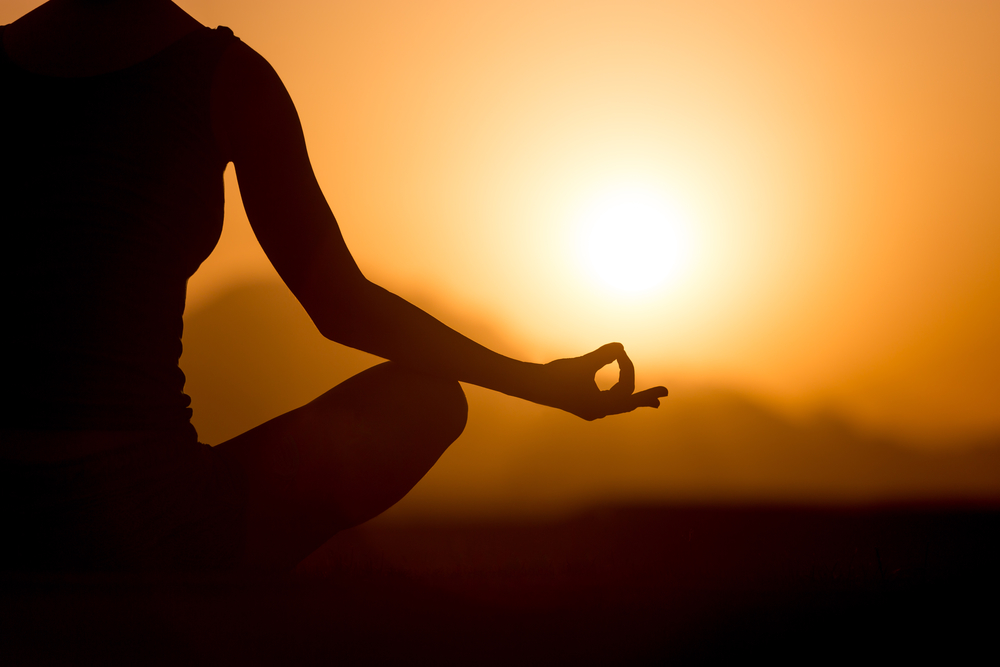Meditation and Health: Why You Should Meditate & How To Start

Meditation and Health in the Modern Era
These days, we live in a very high-paced, agitated, and fear-of-missing-out (FOMO) culture. We are constantly stressed, and surrounded by stress. Our jobs, the news, deadlines, traffic, emotional life events, and even our family and life partners can all be potential triggers of stressful states of both mind and body. Unfortunately, exposure to chronic stress can lead to a variety of health issues. Luckily, as you’ll discover after reading this, we can easily manage our stress, and thus improve our health, with meditation.
Why is chronic stress unhealthy? How can it lead to health problems?
Stress triggers activation of the HPA axis (hypothalamus, pituitary, and adrenal axis) which is responsible for inducing our fight-or-flight response to dangerous situations. The HPA axis provides an evolutionary advantage that helped humans to survive when, for example, we encountered a pack of saber-tooth tigers or lions in the wilderness.
When our brain receives danger signals, the HPA axis is initiated and leads to a cascade of events that eventually leads to release of the hormones cortisol and adrenaline. These two hormones help prioritize the energy use within the body, ensuring that energy is available for your muscles so that you can run away, and that energy is available for your brain so that you can make quick decisions.
These are all good things. However, our environment has drastically changed and the chance of a lion encounter is much lower than it used to be. But, in this modern world, everyday stressful situations like traffic or deadlines, while non-life threatening, also trigger the activation of the HPA axis. In a sense, we are responding to everyday stress in the same way as we respond to encountering a lion or crocodile.
Activation of the HPA axis and release of cortisol and adrenaline are meant to be one time deals. Once the threat is over, these hormones stop acting, and we can return back to a normal state. Unfortunately, the chronic stress we experience in the modern era leads to constant activation of the HPA axis and continuously high levels of cortisol and adrenaline throughout the day.
The impact of chronic cortisol release
Normally, our cortisol levels are highest in the morning and decrease throughout the day. However, when we are stressed, we experience elevated levels of cortisol throughout the day, which can impact our bodies in a very negative way. Chronic release of cortisol can lead to brain fog, adrenal fatigue, hormone imbalance, altered immune function (stress and high cortisol can lead to “leaky gut”), metabolic dysfunction (due to increased levels of insulin in response to cortisol), loss of sex appetite, and accelerated aging.
Managing stress through meditation
As you can imagine, it is vital for humans in the modern era to manage and reduce stress by any means necessary. There are many ways to do this, such as getting plenty of sleep, eating well, and staying fit. However, the best and easiest way to reduce stress (aside from removing ourselves altogether from the stressful situation) is to change and manage how we respond to stressful situations. As it turns out, one very simple and easy way to do this is to train through meditation, a time-tested and proven method to help manage and reduce stress. Lets talk a bit more about meditation, how you could benefit from meditating, and how you can start right away.
What is meditation?
Meditation has been around for a very, very long time. Originally practiced by monks and religious figures since antiquity, it has gained significant popularity worldwide over time. It is now practiced by a multitude of cultures, religions, and communities.
The goal of meditation is to train in order to calm the mind, to improve self-awareness, and to increase awareness of the current moment (a.k.a. mindfulness). While meditating, your body becomes relaxed as your mind goes into a state of mental silence. Your goal is to calm the chatter of your mind, and enter a state of thoughtless awareness (for the science fans out there, it is thought that meditation does this via its action on the posterior cingulate cortex).
Meditation and Health
Something interesting happens when you start to practice this on a regular basis. Not only do you become a happier individual overall, but you also inevitably become immune to stress, and more adept at handling stressful situations. Not only that, but there are a plethora of health benefits of meditation. Research is showing that meditation can help regulate the HPA axis and reduce cortisol levels, slow aging, improve brain health and cognitive function, boost and restore the immune system, and resolve anxiety, depression, and addiction. In fact, it is thought that the reason for reduced stress and improved stress management via meditation is due to the triple action of 1) increased serotonin and dopamine levels (the happy hormones) during meditation 2) lower cortisol release, and 3) heightened cognitive function. [Tip: if you want to learn more about the research on meditation and health, just type in mediation and health in PubMed.]
How do I start meditating?
There are many forms of meditation, but the simplest, most popular, and most effective form to get started with is Transcendental Meditation (TM). One of the major benefits of TM is how relatively easy it is to be learned and mastered. A myriad of influential people including Ray Dalio, Tim Ferriss, Paul McCartney, Oprah Winfrey, and Jerry Seinfeld, to name a few, regularly practice this form of meditation.
TM techniques quickly and effortlessly enable your body to go into a deep state of relaxation. In TM, you don’t concentrate on chanting or breathing, you just focus on quieting your mind, and you only need to practice for 20 minutes at least once a day (although twice a day is recommended).
TM is a great way to enter the realm of meditation, but if you don’t yet have 20 minutes to practice twice a day (you should, or you must be crazy busy!), or don’t have the time to learn TM, then here are a few tips and tricks that you can employ right away to start meditating, practicing mindfulness, and releasing stress:
- Find a song that puts you in a good mood. Once you’ve chosen your song, take about three minutes of your time and sit in a comfortable place with your legs crossed in front of you with a straight spine. Close your eyes, listen and reminisce about positive memories.
- Listen to a guided meditation. A few suggestions are guided meditations by Sam Harris, or the Tara Brach Smile meditation guide, both of which are free and highly recommended.
- Practice breathing. Start every morning with three to five minutes of sitting down with your eyes closed and just work on your breathing. Additionally, you can use an eye mask and earplugs to help filter out light and sound distractions (we offer a very affordable high-quality eye mask and ear plug kit on Amazon). Or, if you prefer, you can use an app like Calm to provide background ambiance (e.g. sounds of waves crashing, or a river stream flowing with birds chirping) while practicing your breathing.
- Practice the “three breath break” throughout the day. This is a technique consisting of taking three deep breaths every time you start to feel angry, sad, or driven by your emotions. This will help you clear your mind, and train you to take control of the situation.
- Use an app. Headspace is a great app to use to quickly and easily start practicing meditation any time of day.
- Practice gratitude. Think about at least three things that you are grateful for. These could be people, things, or situations. Just sit comfortably and take about five minutes to reflect on your gratitude. This will help you relax, and help you rid yourself of stress and angry emotions.
Still curious? Want to learn more about meditation and health?
Go VIP (it’s free!) and receive exclusive content from the HealthSnap team about meditation and health, tips on how to meditate, as well as info about nutrition, and health & fitness in general.
